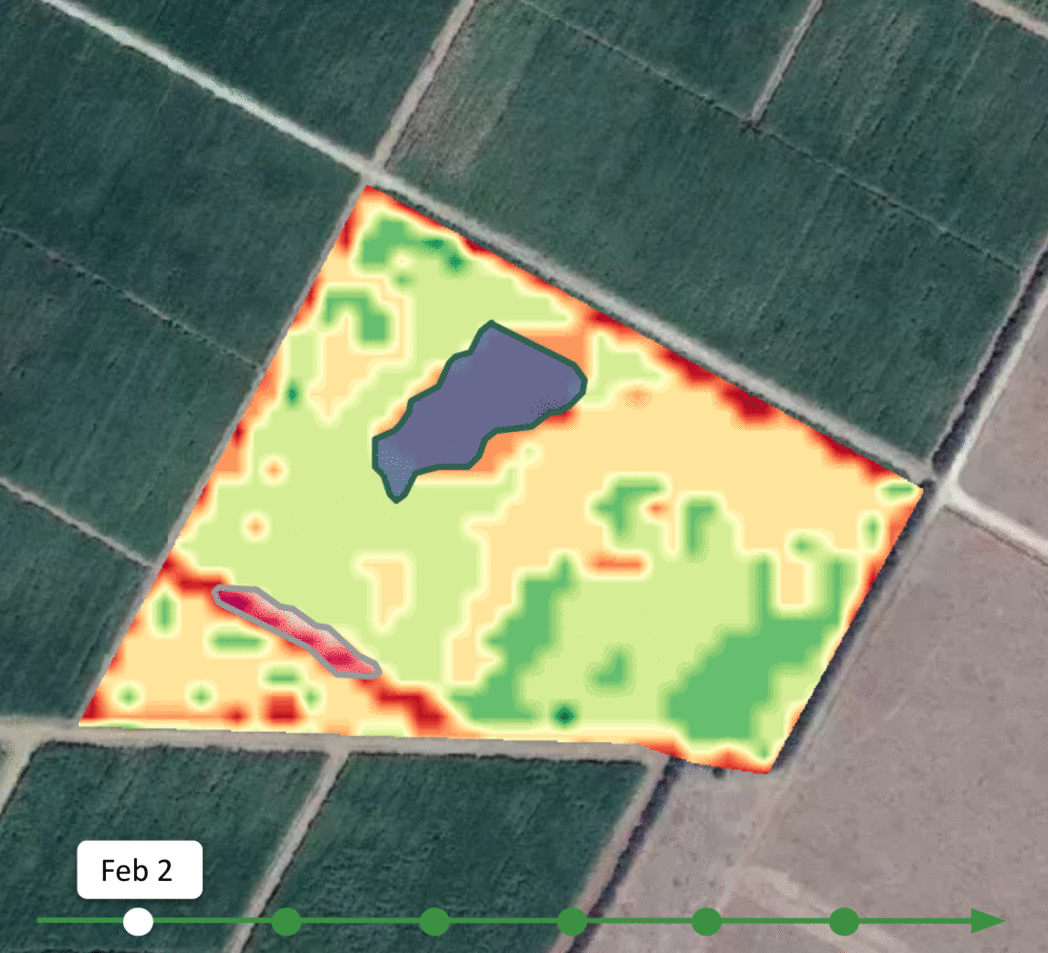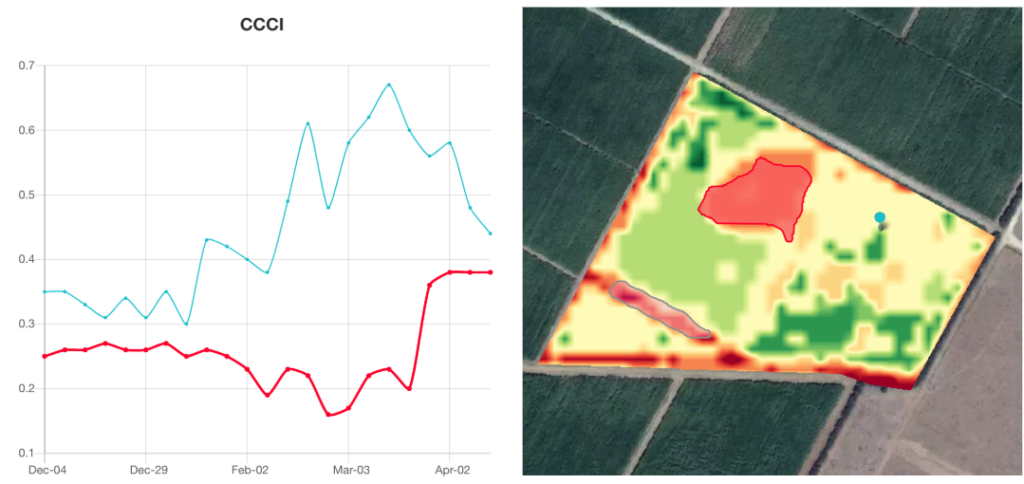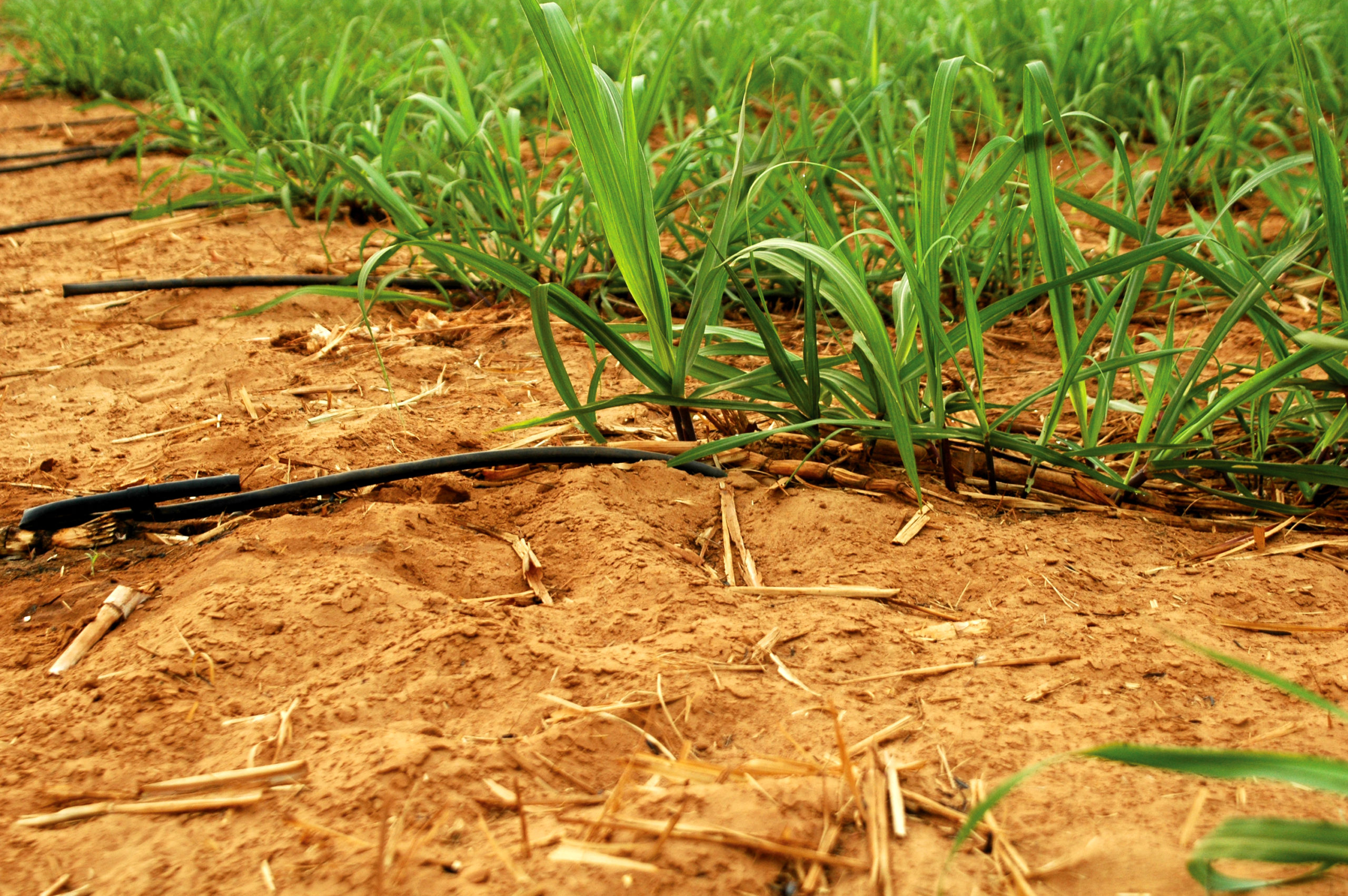Note: In 2021, FluroSat and soil health startup Dagan combined forces to become Regrow. Up-to-date information about the Regrow platform can be found on regrow.ag.
Irrigation in sugarcane is one of the main levers to influence crop yield, specifically in early growth stages when crop establishment set once and for the whole duration of the crop (up to 5 years in sugarcane!). Let's see how a large sugarcane operation has used remote sensing-powered crop stress detection in FluroSense to improve the operations of their Netafim irrigation system.
A large sugarcane producer and processor with 11,000 ha of sugarcane in Senegal has installed Netafim drip irrigation on 3,000 ha. Nicolas S., the irrigation manager, saw real value in using satellite imagery to detect the in-field crop variability and improving yield. Nicolas has recently gained access to FluroSense platform as a customer of Netafim - FluroSat's global irrigation partner.
What happened and what was the issue?
Using FluroSense, Nicolas started to analyse the variability across the property, using the crop performance indicators, like NDVI (indicative of biomass) and NDRE (indicative of crop chlorophyll) derived from satellite imagery.
I was surprised to see differences in plots that visually did not show any difference. After a few weeks, it helped us to identify these areas, inspect them and analyse the differences in NDVI.
Nicolas S., Irrigation manager, Large sugarcane operation

Using the satellite imagery, one specific block was identified as underperforming in early January. At this stage, no damage was yet visible to the naked eye, and it took a few more weeks for the signs of stress to become visible.
The stress was due to a problem with the positioning of the Netafim irrigation line buried too deep in the soil (an issue which is hard to monitor during installation). Early detection, allowed a quick intervention to dig up the lines, and manually apply urea and organic matter to boost the crop that was starting to lag behind the other blocks.
Automatic stress detection
FluroSense goes further in the analysis of crop stress than any other AgTech platform. Rather than providing raw imagery, FluroSense uses smart stress-detection algorithms to identify the areas of crop stress. But the analysis doesn't stop there. The evolution of the stress is monitored throughout the season, and ranked by the level of priority. When stress is detected, it is reported to the user (grower, farm manager or crop advisor) using an email alert.

As shown above, the stressed area has been automatically detected on February 2nd (blue). Its evolution was tracked: its potential to damage the crop changed from low (green) on February 8 to high (red) on February 22.
How well did the crop recover?
Detecting stress is important but monitoring the evolution and the effect of the management practices is even more crucial since this allows to understand if the crop has fully "bounced back" or if there is some permanent damage that will probably be seen in the yield.
A graph from FluroSense below shows the comparison of the chlorophyll content of the stressed area (red), to the rest of the field (blue). The affected area appears to be low in chlorophyll content until March 18th, when it starts recovering. The positive effect of the intervention is obvious.

Summary
Wondering what was the yield loss due to crop damage last season? Or want to see how the reports would look like on your last year’s crops? Keen to see it “tell you more than you already know” by helping you with scouting this cropping season? Get in touch to get a FREE crop stress report for your fields!



